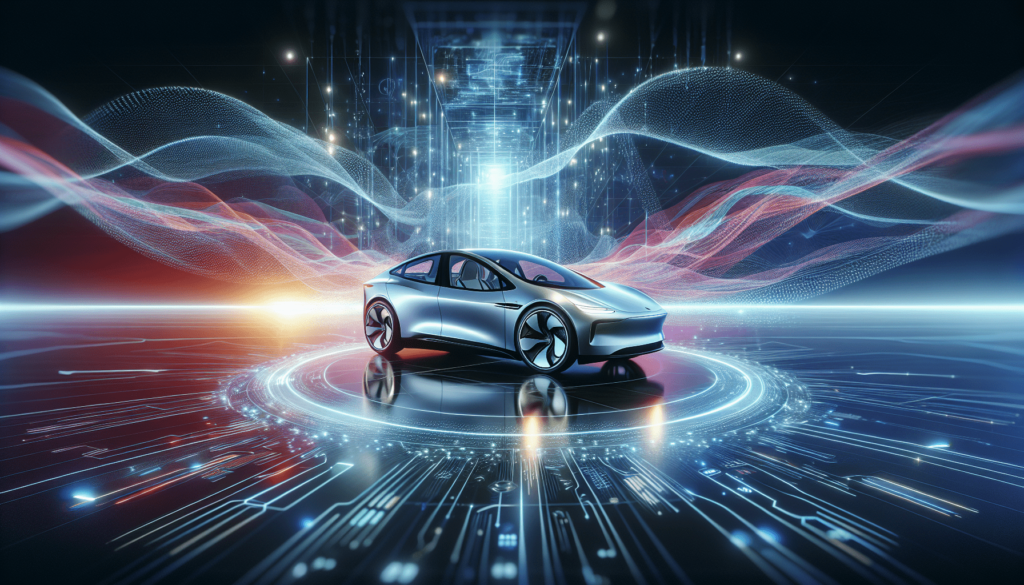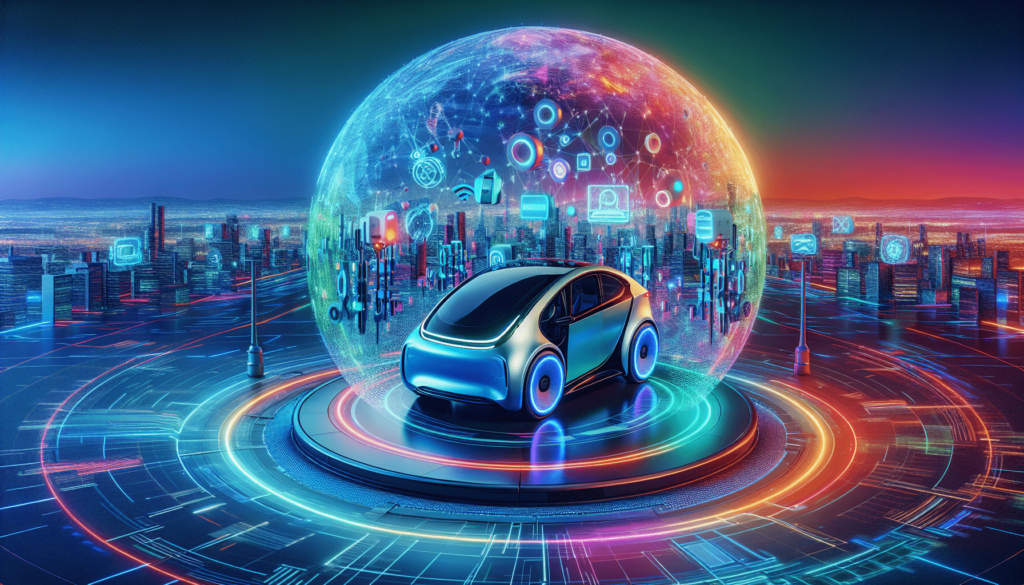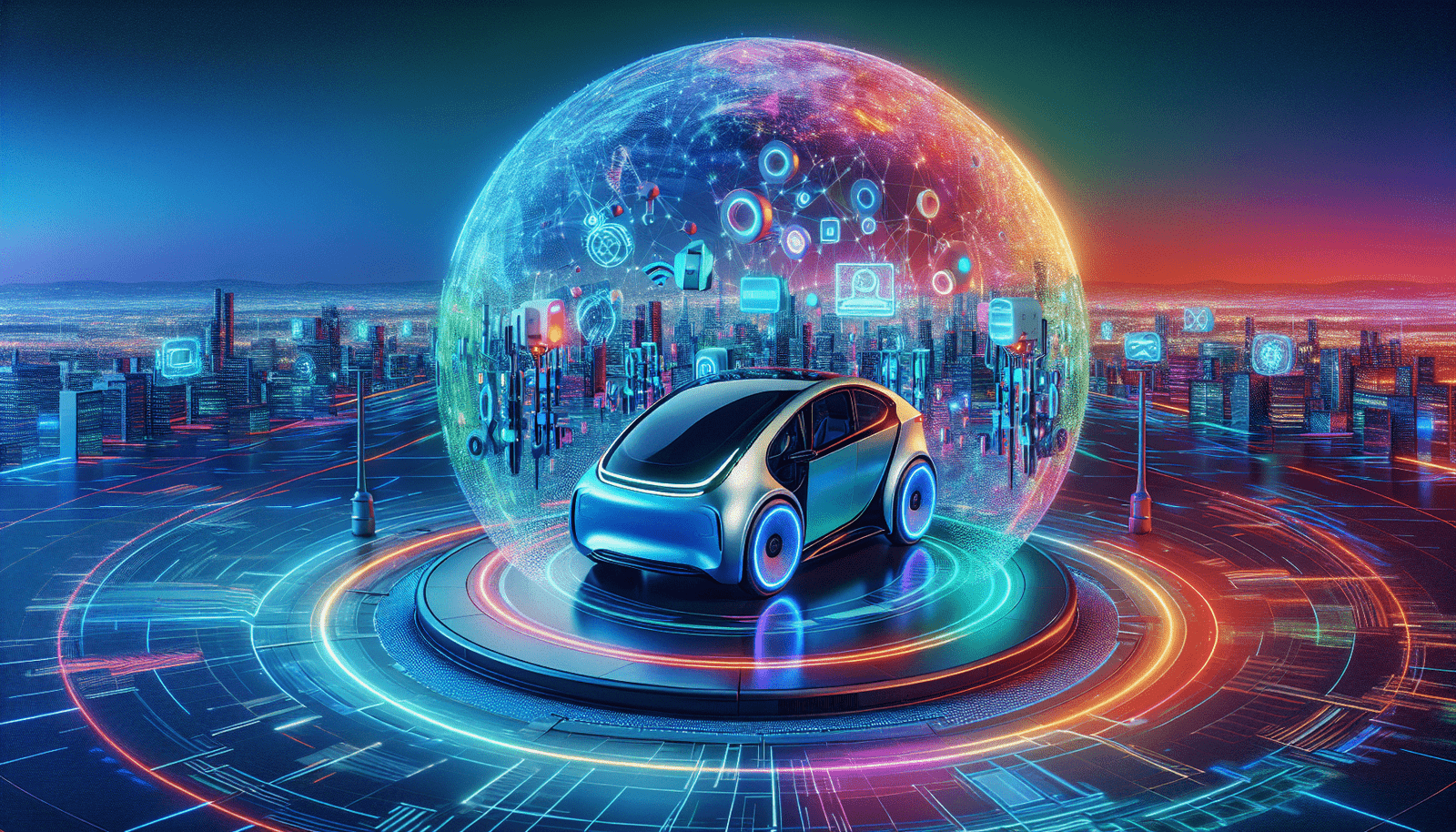Electric vehicles are revolutionizing the automotive industry with their green and sustainable approach. But have you ever wondered how these vehicles are incorporating AI and machine learning to enhance their performance? From optimizing battery life and range prediction to improving driving efficiency and safety, electric vehicles are harnessing the power of AI and machine learning algorithms to create a seamless and intelligent driving experience. Let’s explore how these technologies are transforming the world of electric vehicles.

Autonomous Driving
Autonomous driving has revolutionized the automotive industry, and electric vehicles are at the forefront of this transformation. With the integration of Advanced Driver Assistance Systems (ADAS), electric vehicles are becoming smarter and safer on the road. These systems use AI and machine learning algorithms to analyze data from various sensors and make informed decisions in real-time. They enable features like autonomous emergency braking, lane keeping assist, and adaptive cruise control, which enhance the overall driving experience and ensure a higher level of safety.
Automated Parking
Gone are the days when finding a parking spot was a daunting task. Thanks to AI and machine learning, electric vehicles now come equipped with automated parking systems. These systems use sensors and cameras to detect parking spaces and maneuver the vehicle into the spot without any human intervention. By leveraging advanced algorithms and real-time data analysis, automated parking systems not only save time and reduce the stress of parking, but they also minimize the risk of accidents caused by human error.
Autonomous Features
Electric vehicles equipped with autonomous features are redefining the concept of mobility. With the integration of AI and machine learning, these vehicles are capable of driving themselves in various conditions. From recognizing traffic signs to navigating complex road networks, autonomous electric vehicles rely on data analysis and predictive modeling to make critical decisions. These advanced systems continuously learn from their environment, improving their performance over time. The integration of autonomous features not only enhances convenience and comfort but also sets the stage for a future where roads are safer and congestion is reduced.
Energy Efficiency Optimization
Electric vehicles have always been hailed for their energy efficiency, and AI and machine learning are taking it to the next level. Intelligent Battery Management systems leverage these technologies to optimize the charging and discharging of the vehicle’s battery. By analyzing historical data, weather conditions, and driving patterns, these systems determine the optimal charging schedule and adjust the charging rate accordingly. This not only maximizes the battery’s lifespan but also ensures that energy consumption is efficient.
Energy Usage Analysis and Predictive Control
AI and machine learning have also made it possible for electric vehicles to analyze energy usage patterns and predict future energy requirements. By continuously monitoring and analyzing data from various sensors in the vehicle, these systems can determine when and how much energy will be needed for different driving scenarios. This information allows the vehicle to intelligently manage the energy flow, optimizing the balance between performance and efficiency. Additionally, predictive control algorithms can adjust the vehicle’s energy usage in real-time, based on factors like traffic conditions and route information, further enhancing energy efficiency.
Enhanced Safety
Safety is a top priority in the automotive industry, and electric vehicles equipped with AI and machine learning technologies are raising the bar. Collision Avoidance Systems use advanced sensors and algorithms to detect potential hazards and assist the driver in preventing accidents. These systems can automatically apply the brakes or steer the vehicle away from a collision if necessary. Intelligent Cruise Control, on the other hand, uses AI to analyze real-time traffic data and maintain a safe distance from the vehicle ahead. Lane Departure Warning Systems utilize image processing and machine learning techniques to detect when the vehicle drifts out of its lane, alerting the driver to take corrective action.

Speech Recognition and Natural Language Processing
Imagine having a personal assistant in your electric vehicle that understands your voice commands and responds accordingly. With the help of AI and machine learning, electric vehicles now feature voice-activated controls and virtual assistants. These systems utilize speech recognition and natural language processing algorithms to interpret voice commands and provide appropriate responses. Whether it’s adjusting the temperature, changing the music, or making a phone call, these features allow for a seamless and hands-free interaction with the vehicle’s infotainment system, enhancing convenience and safety while driving.
Data Analysis and Predictive Maintenance
AI and machine learning have transformed the way electric vehicles analyze and utilize data for predictive maintenance. Real-time monitoring systems continuously collect and analyze data from various sensors in the vehicle, enabling early detection of potential issues. By predicting when components may fail or require maintenance, these systems help prevent breakdowns and reduce vehicle downtime. Additionally, vehicle diagnostic algorithms use historical and real-time data to detect and diagnose faults, facilitating efficient repairs and minimizing costs.
Route Planning and Optimization
Efficient route planning and optimization are essential for electric vehicles to maximize their range and reduce charging time. With the incorporation of AI and machine learning, electric vehicles can predict traffic conditions, identify congested areas, and calculate the most time-efficient routes. Traffic prediction and avoidance algorithms analyze historical and real-time data to estimate traffic patterns and provide alternative routes to avoid congestion. Optimized route planning algorithms take into account factors like charging station locations and energy consumption to ensure that the vehicle reaches its destination with minimal energy usage and charging requirements. Electric charging infrastructure mapping systems also leverage AI and machine learning to provide accurate and up-to-date information on charging station locations, availability, and compatibility, simplifying the charging process for electric vehicle owners.
Personalized In-Car Experience
Driving an electric vehicle is not just about efficiency and performance; it’s also about personalization and comfort. AI and machine learning enable electric vehicles to analyze driver preferences and behaviors, creating a truly personalized in-car experience. By learning from past interactions, the vehicle can automatically adjust settings like seat position, temperature, and music preferences to match the driver’s preferences. Smart climate control systems utilize AI algorithms to optimize cabin temperature based on various factors like occupancy, outside temperature, and driving conditions, ensuring optimal comfort and energy efficiency. Customizable infotainment systems allow drivers to personalize their user interface, choosing their preferred layout, apps, and widgets for a seamless and enjoyable driving experience.
Adaptive User Interfaces
The integration of AI and machine learning has also led to the development of adaptive user interfaces in electric vehicles. Gesture recognition technology enables drivers to control various functions of the vehicle through hand movements, reducing the need for manual inputs and minimizing distractions. Eye-tracking systems monitor the driver’s eye movements and detect signs of fatigue or distraction, providing alerts or taking proactive measures to ensure the driver’s safety. Driver monitoring systems use AI to analyze facial expressions and gestures, ensuring that the driver is alert and paying attention to the road. These adaptive user interfaces not only enhance the driving experience but also contribute to improved safety on the road.
Smart Grid Integration
Electric vehicles are not just consumers of electricity; they can also play a crucial role in the smart grid ecosystem. AI and machine learning enable vehicles to communicate with the grid, providing valuable data and insights for demand response and grid load balancing. Vehicle-to-Grid (V2G) communication systems allow electric vehicles to supply power back to the grid during peak demand periods or when renewable energy sources are unavailable. This two-way communication ensures that the grid can efficiently manage fluctuations in energy supply and demand. Demand response algorithms analyze electricity pricing and grid conditions to optimize the timing of charging and discharging, reducing energy costs for electric vehicle owners. Grid load balancing algorithms leverage data from multiple vehicles to distribute charging loads across the grid, preventing overloading and improving overall grid stability.
Cybersecurity and Fraud Detection
As electric vehicles become more connected, ensuring the cybersecurity of these vehicles is of utmost importance. AI and machine learning technologies are being employed to protect vehicle data and detect unauthorized access and potential threats. Vehicle data protection algorithms encrypt and safeguard sensitive information, preventing unauthorized access and potential data breaches. Unauthorized access detection algorithms monitor the vehicle’s network and alert the driver or authorities if any suspicious activity is detected. Anomaly and intrusion detection systems utilize AI algorithms to analyze network traffic and identify patterns that indicate potential cyberattacks or fraudulent activities. These cybersecurity measures are crucial for maintaining the integrity and safety of electric vehicles in an increasingly interconnected world.
In conclusion, electric vehicles incorporating AI and machine learning are transforming the way we drive and interact with our vehicles. From autonomous driving and energy efficiency optimization to enhanced safety and personalized experiences, these technologies are revolutionizing the automotive industry. With continuous advancements in AI and machine learning, electric vehicles are set to become even smarter, safer, and more efficient, paving the way for a sustainable and intelligent transportation future.

